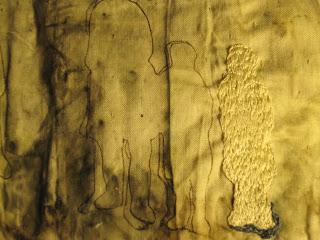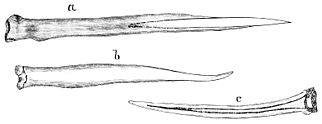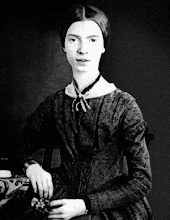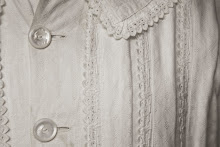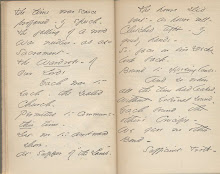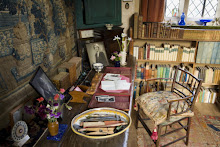I remember the days when I use to think, yay Friday. Don't have to think that way anymore. The days really do wander off or come on their own. Without regularity, also known as a job, one has to really think about the days in a different way. I have several calendars which I find myself checking for validation now...seeing if it really is the day I think it is. I can see how and why my mother with ask me what day is it.
Today I was back in the library (my old office) doing a little more cleaning up and out. After almost thirty years these things take longer. It's almost as though I'm moving out of my second home. So much trash and just plain stuff that I've kept around thinking I'll go back and read that article, or refer to that report/memo. Conference guides and presentation proposals and then the presentations' scripts. The grant proposal that I worked on submitted and got and the ones I didn't get but thought I'd reapply for. Catalogs that I had marked for future acquisitions that now are so old that newer editions of those same titles have been re-issued. When it comes down to it....we are just accumulators/collectors of little bits of memory, history aspects of our former self that we try to hang on to. Why, because we'll forget who we were? Maybe in some cases people have an easier time of just filing away things (in circular containers) and keeping an orderly house...but I think a lot of us too will hold on to things because for one reason or another they have a value that only we understand and probably ultimately forget. Maybe this can explain why my mother keeps going through her things over and over again...seemly without point or really objective - she's trying to recapture something of herself that her memory has misplaced. Someday she look in the mirror and will not recognize the person that she sees in the reflection and she'll eventually too forget my name so until that happens I guess it's okay that she keeps sorting her things remembering the best way she can - just who it was, who was that person that first saved that little object which is so meaningless to everyone but her.
Memento mori is a Latin phrase translated as "Remember your mortality", "Remember you must die" or "Remember you will die".1* It names a genre of artistic work which varies widely, but which all share the same purpose: to remind people of their own mortality. The phrase has a tradition in art that dates back to antiquity.
*1literally " [in the future] remember to die", since "memento" is a future imperative of the 2nd person, and mori is a deponent infinitive
Well, topical subject this: Day of the Dead celebrations are acts of Memento Mori...Victorians were known for keeping photographs of loved (after their death, dressed and posed! but noticeable dead) as such remembrances. And let us not forget the reliquaries - a little saints' keepsake for a token of memory!
But I digress...
So I went to the office...did a little cleaning and came home to the same old same old.
But I did want to post an update of the corner of the newest piece I'm working on...LEFT. The bottom right hand figure is completed. It is the image on the top of the blog page. The correct color is somewhere in between these two! I don't have photoshop just auto correct. The figure is totally filled in long and short stitch. This is the only figure that will be filled. The other figures on the cloth will be outlined and stitched in Jude's walking stitch. The shadows will be completed and will progressively get longer. There is the rectangular "chamber" in the middle which also probably will remained unfilled. Progressing slowly.
Also under the heading of, really like this. I read this yesterday on the Mermaid in the Attic blog. Thought is was interesting and that I'd share it with those that perhaps have not seen it or her page. It deals with down time during the creative process. Artists' Block kind of thing. A little mythical and spiritual and mysterious but that's okay. It reads very with and gave me cause to think about those times I could thread a needle of draw a little or "just what is wrong with me today kind of mood." Hope you enjoy it. I did.
http://amermaidintheattic.blogspot.com/2011/10/descending-into-underworld-labyrinth.html
I like mythology by the way. There is something about the underworld that I find creative.
My Garden Today
3 weeks ago

